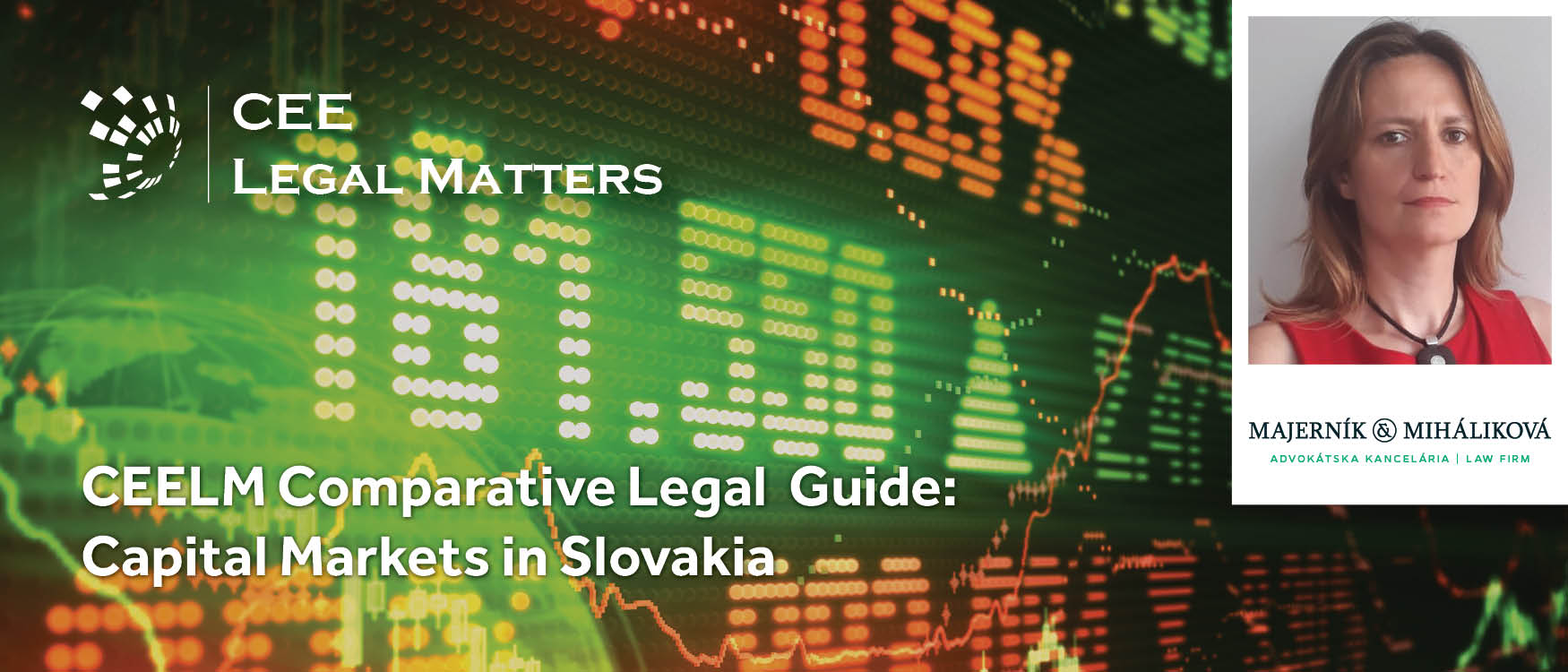Contributed by Ellex Raidla.
1. Market Overview
There are currently only 16 companies listed on the Main List of Nasdaq Tallinn and a further two companies listed on the Secondary List. The Bond List includes 8 corporate issuers. As of April 2020, the market capitalisation of Tallinn Stock Exchange is about EUR 2.4 billion (whereas in January 2020 the market capitalisation was EUR 2.9 billion).
Although the Estonian Capital Markets Diagnostic project carried out in 2019 (the “Diagnostics Report”) did not identify regulatory barriers and deemed the business and economic environment in Estonia to be generally favourable for the development of capital markets, for a number of years the Estonian capital markets have remained rather inactive and illiquid. One of the key reasons behind such inactivity identified by the Diagnostics Report is the issue of limited demand and supply. The IPO of Tallinna Sadam, a state-owned company, on Nasdaq Tallinn in 2018 has been seen as a positive development towards creating a more active capital market by market participants and the Estonian Government has included a goal to continue listing of minority stakes of certain state-owned companies on the Tallinn Stock Exchange.
In comparison to earlier periods, recent years have been more active in terms of new listings of companies and bonds on Nasdaq Tallinn. When during the period of 2010-2015, only one company was listed on Tallinn Stock Exchange, operated by Nasdaq Tallinn Aktsiaselts (“Nasdaq Tallinn”), during the period from 2017 to date three companies have entered the Main List of Nasdaq Tallinn.
Recent listings ON the Main List and Bond List on Nasdaq Tallinn with emission size are the following:
- Eften Real Estate Fund III shares, 2017 (EUR 3.5 million)
- Admiral Markets subordinated bonds, 2018 (EUR 1.8 million)
- Tallinna Sadam shares, 2018 (EUR 165 million)
- UPP Olaines bonds, 2018 (EUR 6.2 million)
- Baltic Horizon bonds, 2018 (EUR 50 million)
- LHV Group subordinated bonds, 2018 (EUR 40 million)
- Coop Pank shares, 2019 (EUR 39 million)
- Inbank subordinated bonds, 2019 (EUR 8 million)
- PRFoods bonds, 2020 (EUR 10 million).
2. Overview of the local stock exchange and listing segments (markets)
Tallinn Stock Exchange, operated by Nasdaq Tallinn, is the only stock exchange in Estonia. Nasdaq Tallinn operates two principal markets, a regulated market for the purposes of the Directive 2014/65/EU of the European Parliament and of the Council on Markets in Financial Instruments (MiFID II) and First North, a multilateral trading facility or “alternative market” which does not have the status of an EU-regulated market.
Nasdaq Tallinn together with Nasdaq stock exchanges in Riga and Vilnius have formed the Baltic Market which means common presentation of all listed Baltic companies in a joint list. In legal terms, however, the companies are listed on their home market, i.e. the exchange in Tallinn, Riga or Vilnius and supervised by their local financial supervision authority.
The regulated market has four market segments for different financial instruments. The structure of the lists of securities traded on the Nasdaq Baltic stock exchanges is as follows:
- Baltic Main List (shares)
- Baltic Secondary List (shares)
- Baltic Bond List (debt securities)
- Baltic Fund List (fund units)
The Main List and Secondary List are both regulated markets, however, the eligibility requirements for securities and their issuers for admission to Secondary List are not so high than requirements set forth for securities listed on the Main List. In addition to corporate bonds, the Bond List includes also sovereign bonds. To date, the Estonian government has no listed bonds and so the Baltic Bond list only includes Latvian and Lithuanian government bonds.
First North has separate lists for equities and bonds:
- First North Baltic Share List (shares)
- First North Baltic Bonds List (debt securities).
First North has been established to enable smaller and growing companies who do not meet the criteria to be listed on the regulated market access to capital markets.
3. Key Listing Requirements
A company wishing to list its securities on Tallinn Stock Exchange must meet the criteria and comply with the requirements established by Nasdaq Tallinn rulebook. For the purposes of this overview, we will focus on the eligibility requirements applicable for companies wishing to list its shares or bonds on the Main List or the Bonds List of Nasdaq Tallinn or First North relevant lists respectively.
Main List. For a company’s shares to be eligible for listing and admission to trading on the Main List, the company must have, as a rule, at least three years of operating history in its main field of activity and an established financial position. The market capitalisation of the company must be above EUR 4 million. The company must prepare its financial reports in accordance with the International Financial Reporting Standards. The shares must be freely transferable, and the expected free float must be at least 25%.
Bonds List. A company applying for the first listing of its bonds to the Bond List, shall have been engaging in its main field of activity for at least two years. Generally, the bonds must be nominated in euro and the total nominal value of the bonds submitted for listing must amount to at least EUR 1 million.
First North. Admission is based on a First North separate rulebook under which the eligibility criteria are more relaxed, for instance, no duration requirement is established for the company’s operating history and there are no thresholds for the quantity of securities or market capitalisation of the company. The company seeking admission to First North must appoint a Certified Adviser whose role is to support the issuer in the admission process and thereafter upon complying with the First North rulebook, in particular with the continuous compliance with the disclosure requirements.
4. Prospectus Disclosure
If a company intends to offer transferable securities to the public and/or seeks admission of those transferable securities to trading on a regulated market in Estonia, it will need to prepare and publish a prospectus. As of July 2019, the prospectus regime is harmonised on the EU level and companies can draw up the prospectus following the requirements established by the directly applicable Regulation (EU) 2017/1129 of the European Parliament and of the Council (the “Prospectus Regulation”) and its implementing acts, in particular the Commission Delegated Regulations (EU) 2019/980 and (EU) 2019/979.
The specific disclosure items to be made in the prospectus depend on the issuer and the type of securities and are established by the Prospectus Regulation regime. As a general principle, the prospectus must contain all necessary information which is material for an investor to make an informed assessment of the assets and liabilities, profits and losses, financial position, and prospects of the issuer and of any guarantor, the rights attaching to the securities and the reasons for the issuance and its impact on the issuer. Omission of information from a prospectus is possible only in very limited circumstances upon authorisation from the Estonian Financial Supervision Authority (EFSA).
In Estonian practice, the prospectus is typically prepared as a single document and to date, tri-partite prospectus format (i.e., prospectus comprising of three separate documents, registration document, securities note and summary) has not be used. For bond programmes, issuers have also prepared the offering document in base prospectus format.
Estonian Securities Market Act establishes that a prospectus registered with the EFSA must be generally prepared and published either in Estonian or English language. Until recently, most of the prospectuses registered with the EFSA were prepared in English with only the summary of the prospectus translated into Estonian. This allowed the same offering document to be used for both the international and local offering. This practice may be subject to change as due to a recent legislative amendment, if the prospectus registered with the EFSA is in English, but the securities are also wished to be offered in Estonia, the issuer must prepare and publish a translation of the full prospectus into Estonian.
5. Prospectus Approval Process
The EFSA acts as competent authority in Estonia for the approval and review of the prospectus under the Prospectus Regulation.
Before a prospectus can be published, it must be approved by the EFSA. The approval process by the EFSA takes place in accordance with the procedure established by the Prospectus Regulation. There is no requirement for the number of filings of the prospectus to be made to the EFSA, but in practice, a debut issuer should plan a minimum of three filings. Pursuant to the Prospectus Regulation, the EFSA must provide its feedback within 20 working days of the submission of the first draft of the prospectus and within 10 working days for each subsequent filing.
6. Listing Process
Under the Nasdaq Tallinn rulebook, the decision on the listing or on the refusal to list securities is taken within three months after the start of the listing procedure. This period can be extended to six months if so decided by Nasdaq Tallinn. In practice however, the listing procedures take less time and usually run concurrently with the prospectus approval proceedings with the EFSA.
7. Corporate Governance
Companies whose shares are listed on the Main List or Secondary List of Nasdaq Tallinn, are expected to follow the Estonian Corporate Governance Recommendations as adopted by EFSA (the “Code”) which establishes the principles of good corporate governance for listed companies. The Code is binding based on a “comply or explain principle” which means that the requirements which are not fully followed by the issuer during any financial year shall be described in its corporate governance report to be made available in its annual report. The Code does not apply to companies admitted to trading on First North, but the companies are welcomed to apply it on a voluntary basis.
The Code covers matters such as guidelines for shareholder involvement, composition and responsibilities of the management and supervisory boards, executive remuneration, rotation of statutory auditors. The Code requires, inter alia, that at least half of the members of the supervisory board of the issuer are independent. If the supervisory board has an odd number of members, then there may be one independent member less than the number non-independent members.
The Code does not the issuers to establish specific committees and only requires that the details of any committees the issuer has established (such as remuneration or audit committee) are disclosed on the website of the issuer. Nevertheless, under Estonian law, companies whose securities are admitted to trading on a regulated market, must as a minimum have an audit committee composing of at least two members including one of whom must be an expert in auditing or accounting.
8. Documentation and Other Process Matters
8.1. Stabilisation
Stabilisation means the process of purchasing or offering to purchase the securities that is undertaken by an underwriter in the context of a selling pressure after a significant distribution of those securities exclusively for the purposes of supporting the market price of the securities for a predetermined period.
In order for the stabilisation transactions not to be regarded as insider dealing or market manipulation, any such transactions on Nasdaq Tallinn must be carried out in accordance with the requirements established by Regulation (EU) No 596/2014 of the European Parliament and of the Council (MAR) and its implementing acts. MAR is directly applicable in Estonia and there are no further local legal requirements for carrying out stabilisation.
In accordance with MAR, the following key requirements apply to stabilisation activities:
- Stabilisation may be carried out in case of a “significant distribution of securities,” i.e., IPOs and secondary/follow-on offerings;
- The securities that can be stabilised are shares and other securities equivalent to shares, bonds and other forms of securitised debt, securities debt convertible or exchangeable into shares or into other securities equivalent to shares;
- The stabilisation can be only carried out for a limited period (in respect of shares the time period is no longer than 30 calendar days whilst in respect of bonds it is no longer than 60 days);
- Pre-stabilisation and post-stabilisation disclosure and notification requirements must be followed;
- Adequate price limits must be complied with.
Notably, stabilisation transactions may not be effected with a price higher than the offering price of the shares. For example, if the price of shares in the aftermarket drops below the offering price, the stabilisation manager, acting on behalf of the syndicate, may purchase securities in the market, thereby supporting the share price. However, if the price of the shares in the aftermarket increases above the offering price, the stabilisation manager will not be allowed to engage in stabilisation. More detailed requirements for stabilisation are established by Commission Delegated Regulation (EU) 2016/1052.
From a practical perspective, there have been only a limited number of transactions in Estonia which have included a stabilisation arrangement. In those cases, stabilisation has been documented and handled in line with international practice, i.e. a stabilisation manager is appointed to act on behalf of the syndicate of banks and the terms of stabilisation are agreed in the underwriting agreement.
8.2. Over-allotment, greenshoe and share lending
An over-allotment is an option available to the underwriters that allows the sale of additional shares from what a company plans to issue in an initial public offering or secondary/follow-on offering. The over-allotment option gives the underwriters the right, but not the obligation, to purchase from the issuer or the selling shareholder a specified number of additional shares beyond the number in the original offering at the offering price.
Over-allotment option can be used as a stabilisation technique, together with stock lending and greenshoe structure. If the market price exceeds the offering price, underwriters cannot buy back those shares without incurring a loss. Greenshoe option allows underwriters to buy shares from the issuer or the selling shareholder at the offering price for the purposes of covering its short position taken. The option to acquire additional shares from the issuer or the selling shareholder is limited to 15% of the size of the original offering and the option can be exercised within 30 days of the equity offering. This means that greenshoe is a type of call option that allows underwriters to sell investors more shares than originally planned at the offering price.
For the purposes of facilitating and stabilisation, the stabilisation manager may enter into a share lending agreement with a shareholder of the issuer. This is done, inter alia, to allow the stabilisation manager to settle any over-allotments made in connection to the offer to the investors. If the stabilisation manager borrows any shares pursuant to the share lending agreement, it will be required to return the securities by a specific day as agreed in the share lending agreement.
8.3. Greenshoe vs brownshoe structure
Based on the limited examples available, greenshoe structure is accepted and workable in Estonia. Brownshoe structure has been also successfully used in Estonia in one instance, in case of Tallinna Sadam’s IPO in 2018.
In case of a brownshoe or “reverse green shoe” option, the shares are sold to investors as part of the base offering (i.e. there is no over-allotment or share lending) but the stabilisation manager will retain a part of the proceeds from the sale of those shares as stabilisation reserve. In case during the stabilisation period the share price on the market drops below the offering price, the stabilisation manager may effect purchases by using the reserve and acquire shares in up to 15% of the original offer size. Upon end of the stabilisation period, the underwriter is entitled to sell back the shares acquired during the stabilisation period to the selling shareholder or the issuer as the case may be. In other words, a brownshoe is a form of put option which gives the owner the right to sell the shares to a given party by a predetermined date and at a specified price. In case the call option was granted by the issuer, upon exercise of the call option, the issuer will presumably reduce its share capital by cancelling the shares. Under Estonian corporate law, a company is not allowed to hold more than 10% of its own shares.
9. Ongoing Reporting Obligations (Life as a Public Company)
Public companies are subject to various ongoing disclosure and reporting obligations, which vary based on the market on which the securities trade and the nature of the securities offered.
Periodic disclosures. Listed companies are subject to, by operation of the Estonian Securities Market Act (implementing also the Directive 2004/109/EC of the European Parliament and of the Council - the Transparency Directive) and Nasdaq Tallinn rulebook, periodic disclosure obligations. Among others, companies admitted on Tallinn Stock Exchange are required to make public its audited annual report, prepared in accordance with IFRS as adopted by the EU no later than four months after the end of the accounting period. The companies whose shares are admitted to trading on the regulated market are also required to compile quarterly interim reports which must be published no later than two months after the reporting period. Issuers of bonds and investment funds are not obliged to published quarterly reports, but semi-annual reports will suffice.
Ad hoc disclosures. MAR governs the disclosure of material, price-sensitive information which arises outside the periodical reporting cycle. Pursuant to MAR, companies are generally obliged to immediately disclose all inside information to the market, with only limited grounds for delaying such disclosure being available. Companies who do not have listed securities become subject to the requirements established by MAR as of requesting admission to trading on a regulated market or multilateral trading facility with Nasdaq Tallinn. MAR further imposes notification requirements to managers and persons close about transactions made with the financial instruments of the issuer, foresees black-out periods of 30 days before publication of interim reports annual reports during which conducting trades with the shares by the managers is not allowed and requires the issuers to establish and maintain insider lists.
In addition, Nasdaq Tallinn rulebook also prescribes a catalogue events and transactions which must be immediately disclosed to the market, regardless of whether the information amounts to inside information or not.
It is worth mentioning that Estonian companies are not obliged to publish notifications about managers trades under Article 19 of MAR via Tallinn Stock Exchange and the transactions are only required to be reported to the EFSA who will make the information available to the public via its regulated information system.
Companies that have securities admitted to trading on First North are subject to a less heavy disclosure regime established by the First North rulebook. However, since entry into force of MAR in 2016 which extended its application also to companies whose securities are admitted to trading on a multilateral trading facility (such as First North), these companies are nevertheless subject to a rather extensive ad hoc disclosure regime.
Both Nasdaq Tallinn and the EFSA exercise supervision over the trading activity on Tallinn Stock Exchange, including the disclosure of adequate information to the investors by the issuers, protection of the interests of the investors as well as their fair and equal treatment.
























